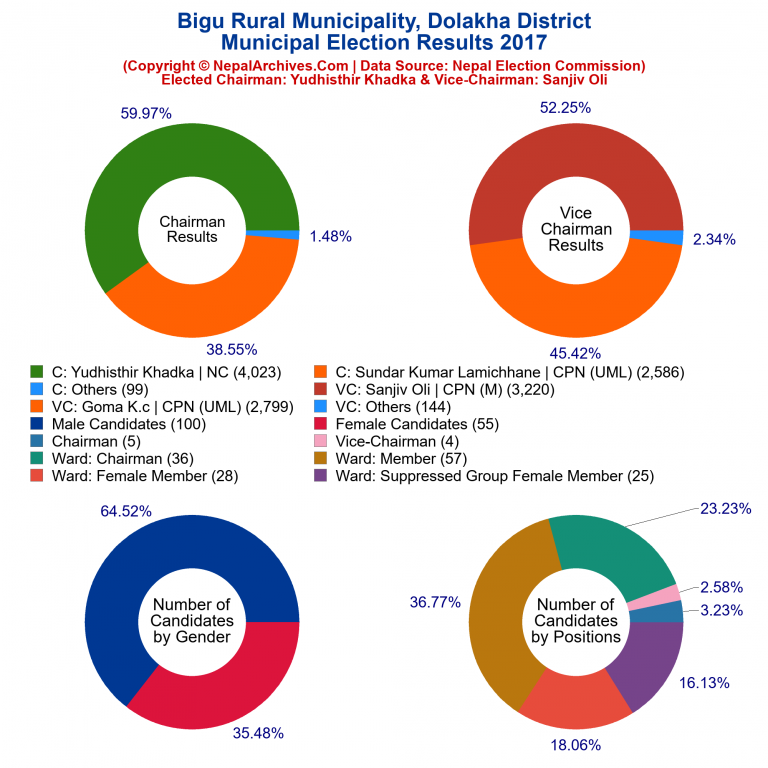January 25, 2020
Bigu Rural Municipality (Dolakha) Election Results 2017
In 2017 election of Bigu Rural Municipality (Dolakha district), candidate Yudhisthir Khadka of Nepali Congress Party (NC) secured 4,023 (59.97%) votes out of total votes of 6,708 and was elected as a Chairman. The first runner-up candidate was Sundar Kumar Lamichhane of Nepal Communist Party (Unified Marxist-Leninist) (CPN (UML)) who secured 2,586 (24.10%) of votes. The rest of 3 candidates for the position of Chairman secured combined 99 (0.74) of votes.
Similarly, for the position of Vice-Chairman, candidate Sanjiv Oli of Nepal Communist Party (Maoist) (CPN (M)) secured 3,220 (52.25%) and was elected as a Vice-Chairman, while Goma K.c of Nepal Communist Party (Unified Marxist-Leninist) (CPN (UML)) secured 2,799 (29.83%) of votes and came in second position. Other 2 candidates who contested for Vice-Chairman secured combined 144 (1.17) of votes.

As illustrated in the pie chart, there were total 155 candidates contested in various positions with gender ratio of 100 (64.52%) males and 55 (35.48%) females. Moreover, there were total 36 candidates contested for ward chairman positions in 8 wards. Same as, total 57 candidates had contested for ward member positions while 28 females and 25 females from depressed group (dalit) had contested for female member position in each ward.
Similarly, for the position of Vice-Chairman, candidate Sanjiv Oli of Nepal Communist Party (Maoist) (CPN (M)) secured 3,220 (52.25%) and was elected as a Vice-Chairman, while Goma K.c of Nepal Communist Party (Unified Marxist-Leninist) (CPN (UML)) secured 2,799 (29.83%) of votes and came in second position. Other 2 candidates who contested for Vice-Chairman secured combined 144 (1.17) of votes.

As illustrated in the pie chart, there were total 155 candidates contested in various positions with gender ratio of 100 (64.52%) males and 55 (35.48%) females. Moreover, there were total 36 candidates contested for ward chairman positions in 8 wards. Same as, total 57 candidates had contested for ward member positions while 28 females and 25 females from depressed group (dalit) had contested for female member position in each ward.


